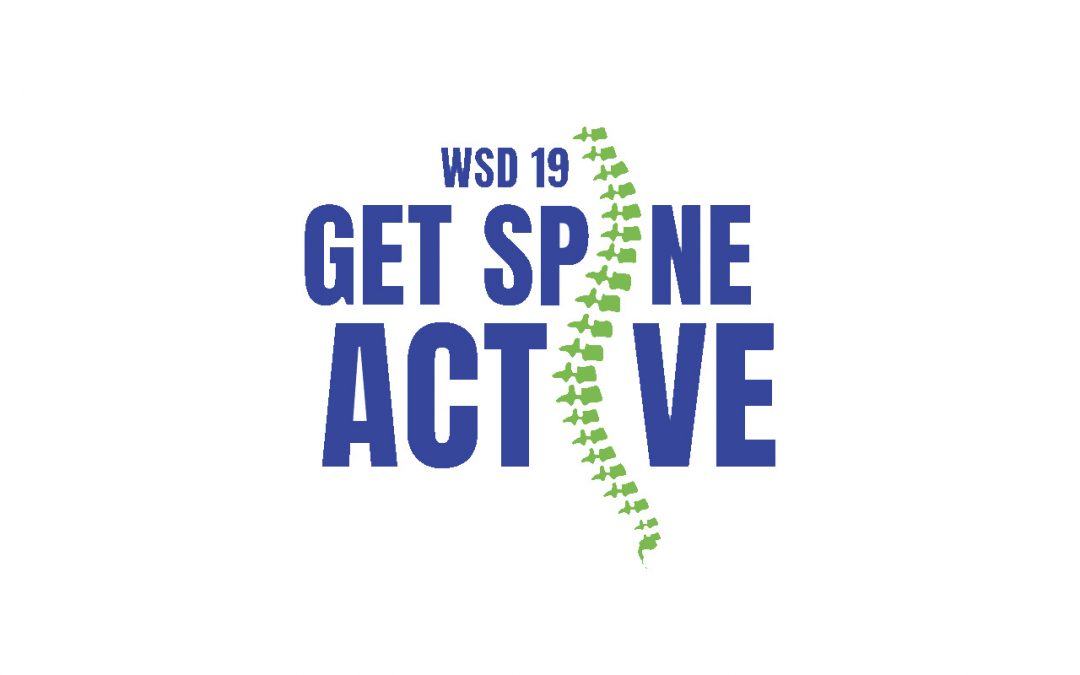This year’s theme for World Spine Day is Get Spine Active so last night we went live on Facebook and Instagram to talk about restoring faith in flexion.
Did you miss us? What do you mean you had something better to watch online!
Last night we went live on Facebook and Instagram to talk about restoring faith in flexion.
The Spinal Flexion Debate is an old one. Research conclusions differ, opinions divide and advice changes.
Its also different through the lens of a therapists or the lens of a Strength Coach and this is because exercise advice for pain relief differs from performance based exercise advice. Exercise for pain relief is not limited to correct techniques or perfect form, all movements are available. In contrast a strength coach will focus on technique, maintaining form and repeating specific movements while avoiding less ‘strong’ positions.
Our live discussion session was not about S&C, not about how to deadlift, and not how to increase your 1 Rep Max. We did mention that based on the research we believe a neutral spine is best when squatting or deadlifting, we left it here and moved on to the core of what we really wanted to discuss.
Fear of flexion
I have had many patients who have adapted a rigid, hyperlordotic, hip hinge only approach to bending that could be described aptly and a problem of ‘hyperstability’ likely caused by the ‘keep your back straight’ manual handling advisors and ‘core stability’ champions. Now there is nothing inherently wrong about keeping your back straight and doing some ‘core’ work, it would likely help alot of poeple. Its how this advice is interpreted, misinterpreted and incorrectly shared in the social ether and online quagmire. Keeping your spine straight becomes ‘flexion is harmful’ and core stability becomes ‘brace, tense, fix and lock’. Oh dear now we have a problem.
Research can you help here? A more flexed spine is not as dangerous as we have been led to believe. There may be a slight increase risk of disc herniations with flexion but herniation still occurs in neutral so we cant blame it all of flexion, its multifactoral. Herniations are also thought to be a negligible cause of back pain – only a few percent.
In terms of performance and again I am not here to pose as an S&C expert, but I will quickly highlight that if you watch weight lifters they maintain a neutral spine and hinge at the hips to maximise power output.
Back to flexion and the Flexion Relaxation Phenomenon (FRP).
When you flex forward your lumbar erectors should relax from mid to full flexion and load is then placed on the passive structures.
Things change when you add load the muscles obviously work harder for longer or do not relax fully.
Important point the Flexion Relaxation Phenomenon does not occur in most LBP patients. Acute back pain sufferers typically see a natural return of the FRP but longer term sufferers see a maintained absence of the FRP. Positively we can reduce this problem by gradually returning flexion for acute sufferers and educating and guiding more persistent sufferers.
How to do it
Understand: Why they are not allowing flexion, is it because they have been told to avoid it, is it because of pain?
Educate: Flexion is normal, they may have pain-senstised flexion through avoiding it. A gradual graded exposure method can be used to progressively restore function.
Treat: Manual therapy plus exercise. We used blades, hands, pods, tape and a progressive movement programme.
Conclusion: In restoring the specific motion of lumbar flexion, just a few degrees in a single direction, we aim to remove irrational fear of movement, correct misconceptions of weak structure, demote feelings of fragility and restore the patients movement confidence.
The 30 minute live video recording should be available via a couple of links on Instagram and Facebook (Links to add).

